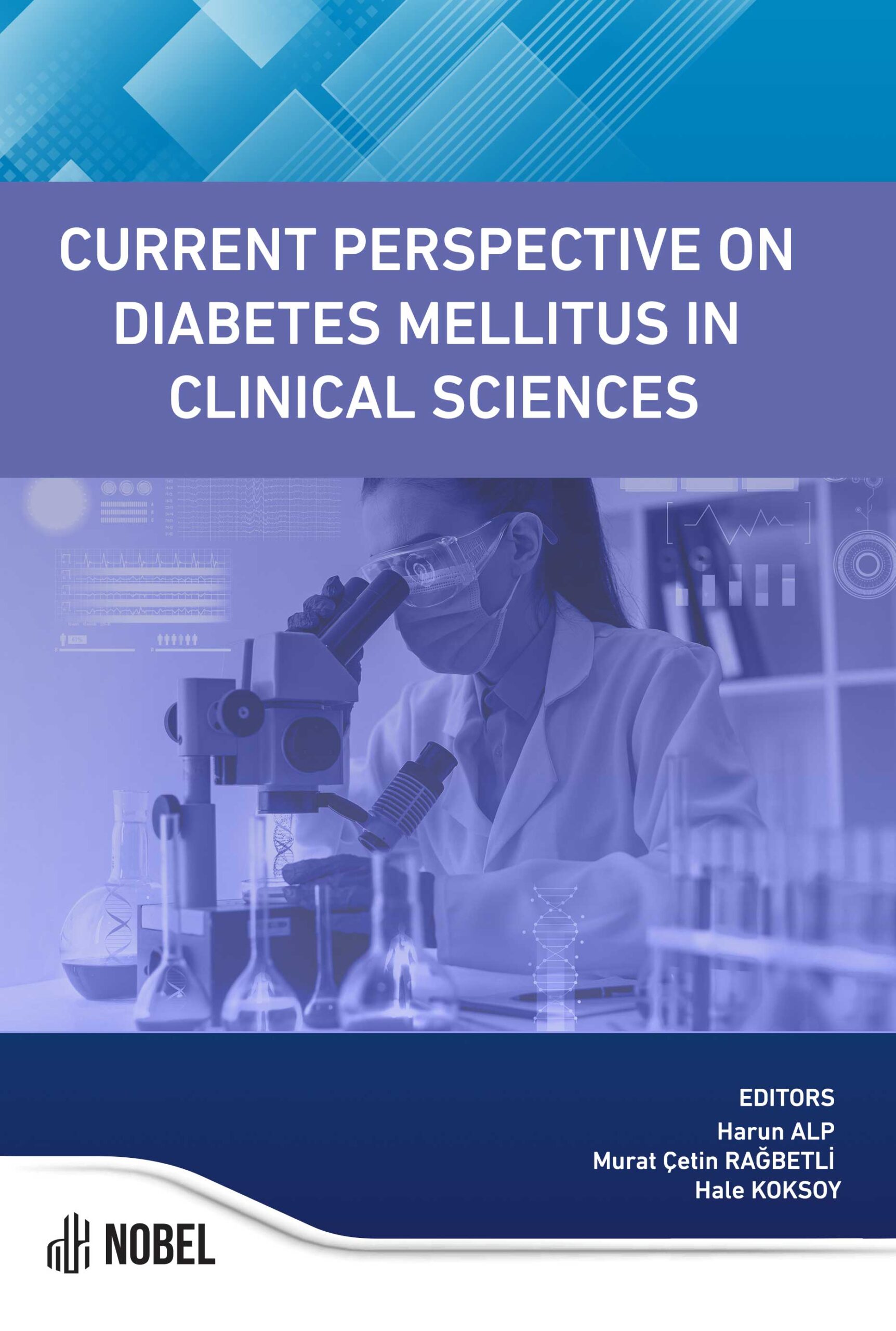Effects of Sulphanure Drugs on Diabetics
Ercan Karabulut (Author)
Release Date: 2023-09-14
Sulfonylurea drugs are widely used in the treatment of type 2 diabetes to lower blood glucose levels by stimulating insulin secretion from pancreatic beta cells. They act by binding to ATP-sensitive potassium channels on these cells, causing depolarization and subsequent insulin release. Despite their effectiveness in improving glycemic control, sulfonylureas can lead to several side [...]
Media Type
PDF
Buy from
Price may vary by retailers
| Work Type | Book Chapter |
|---|---|
| Published in | Current Perspective on Diabetes Mellitus in Clinical Sciences |
| First Page | 125 |
| Last Page | 132 |
| DOI | https://doi.org/10.69860/nobel.9786053359111.11 |
| ISBN | 978-605-335-911-1 (PDF) |
| Language | ENG |
| Page Count | 8 |
| Copyright Holder | Nobel Tıp Kitabevleri |
| License | https://nobelpub.com/publish-with-us/copyright-and-licensing |
Ercan Karabulut (Author)
Associate Professor, Ankara Yildirim Beyazit University
https://orcid.org/0000-0001-6733-2497
Lachance CH. Practical Aspects of Monogenic Diabetes: A Clinical Point of View. Can J Diabetes. 2016 Oct;40(5):368–75.
Zimmerman BR. SULFONYLUREAS. Endocrinol Metab Clin North Am. 1997 Sep;26(3):511–22.
Scheen AJ. Sulphonylureas in the management of type 2 diabetes: To be or not to be? Diabetes Epidemiology and Management. 2021 Jan;1:100002.
Melander A, Bitzén PO, Faber O, Groop L. Sulphonylurea Antidiabetic Drugs: An Update of Their Clinical Pharmacology and Rational Therapeutic Use. Vol. 37, Drugs. 1989.
Hemmingsen B, Schroll JB, Wetterslev J, Gluud C, Vaag A, Sonne DP, et al. Sulfonylurea versus metformin monotherapy in patients with type 2 diabetes: a Cochrane systematic review and meta-analysis of randomized clinical trials and trial sequential analysis. CMAJ Open. 2014;2(3).
Drugs MR, 2004 undefi ned. The role of sulphonylureas in the management of type 2 diabetes mellitus. Springer [Internet]. [cited 2023 Jan 27]; Available from: https://idp.springer.com/authorize/casa?redirect_uri=https://link.springer.com/article/10.2165/00003495-200464120-00006&casa_token=qXHnemlqsoYAAAAA:Ou 8PmoyBUdODDzyOa38lFBMgptoII-QuQnhGPdsaNK_duRB0NOIessrLB0xElczdcYNYCsazIgd_-8A
Rendell M. The role of sulphonylureas in the management of type 2 diabetes mellitus. Drugs. 2004;64(12):1339–58.
9.mellitus. Diagnosis and treatment. An interpretation]. Ugeskr Laeger. 1990;152(1).
Kaliszan R, Siluk D, Haber P, Petrusewicz J, Brzozowski Z, Sut G. Antiaggregatory activity of hypoglycaemic sulphonylureas. Diabetologia. 2002;45:1034–7.
Qi R, Ozaki Y, Satoh K, Kurota K, Asazuma N, Yatomi Y, et al. Sulphonylurea agents inhibit platelet aggregationand [Ca2+]i elevation induced by arachidonic acid. Biochem Pharmacol. 1995 Jun 16;49(12):1735–9.
Ferner RE, Chaplin S. The Relationship Between the Pharmacokinetics and Pharmacodynamic Effects of Oral Hypoglycaemic Drugs. Vol. 12, Clinical Pharmacokinetics. 1987.
Campbell DB, Lavielle R, Nathan C. The mode of action and clinical pharmacology of gliclazide: a review. Vol. 14, Diabetes Research and Clinical Practice. 1991.
Groop L, Groop P, Stenman S, … CSD, 1987 undefi ned. Comparison of pharmacokinetics, metabolic effects and mechanisms of action of glyburide and glipizide during long-term treatment. Am Diabetes Assoc [Internet]. [cited 2023 Feb 17]; Available from: https://diabetesjournals.org/care/article-abstract/ 10/6/671/2414
Groop L, Luzi L, Melander A, Groop P, Diabetes KR, 1987 undefi ned. Different effects of glyburide and glipizide on insulin secretion and hepatic glucose production in normal and NIDDM subjects. Am Diabetes Assoc [Internet]. [cited 2023 Feb 17]; Available from: https://diabetesjournals.org/diabetes/articleabstract/ 36/11/1320/6699
Sola D, Rossi L, Schianca GPC, Maffi oli P, Bigliocca M, Mella R, et al. State of the art paper Sulfonylureas and their use in clinical practice. Archives of Medical Science. 2015;4:840–8.
Bell DSH. Do sulfonylurea drugs increase the risk of cardiac events? CMAJ [Internet]. 2006 Jan 17 [cited 2023 Feb 23];174(2):185–6. Available from: https://www.cmaj.ca/content/174/2/185
Inzucchi SE. Oral antihyperglycemic therapy for type 2 diabetes: Scientifi c review. Vol. 287, JAMA. 2002.
van Dalem J, Brouwers MCGJ, Stehouwer CDA, Krings A, Leufkens HGM, Driessen JHM, et al. Risk of hypoglycaemia in users of sulphonylureas compared with metformin in relation to renal function and sulphonylurea metabolite group: Population based cohort study. BMJ (Online). 2016;354.
Jackuliak P, Kužma M, Payer J. Effect of Antidiabetic Treatment on Bone. [cited 2023 Feb 27]; Available from: www.biomed.cas.cz/physiolresPhysiol.Res.68
| onix_3.0::thoth | Thoth ONIX 3.0 |
|---|---|
| onix_3.0::project_muse | Project MUSE ONIX 3.0 |
| onix_3.0::oapen | OAPEN ONIX 3.0 |
| onix_3.0::jstor | JSTOR ONIX 3.0 |
| onix_3.0::google_books | Google Books ONIX 3.0 |
| onix_3.0::overdrive | OverDrive ONIX 3.0 |
| onix_2.1::ebsco_host | EBSCO Host ONIX 2.1 |
| csv::thoth | Thoth CSV |
| json::thoth | Thoth JSON |
| kbart::oclc | OCLC KBART |
| bibtex::thoth | Thoth BibTeX |
| doideposit::crossref | CrossRef DOI deposit |
| onix_2.1::proquest_ebrary | ProQuest Ebrary ONIX 2.1 |
| marc21record::thoth | Thoth MARC 21 Record |
| marc21markup::thoth | Thoth MARC 21 Markup |
| marc21xml::thoth | Thoth MARC 21 XML |

